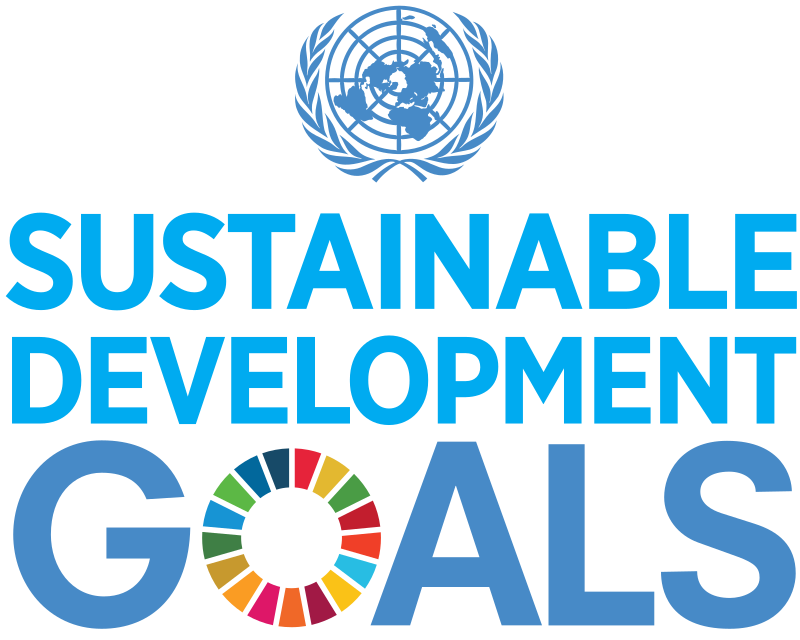Alignment of U.N. Sustainable Development Goals and The Climate Toolkit

The United Nations created the 17 Sustainable Developmental Goals (SDGs) “to produce a set of universal goals that meet the urgent environmental, political and economic challenges facing our world.” Each target includes smaller targets to broaden the scope of each goal. The SDGs expand on the efforts the Millennium Development Goals which created standards against poverty, hunger, HIV/AIDS and other treatable diseases, and expanding primary education to all children. Climate change is greatly impacting public health, food and water security, migration, peace and security so any efforts working to reduce sustainable development can greatly help climate change. The Sustainable Developmental Goals and The Climate Toolkit both focus on aggressively addressing climate change.
The Climate Toolkit Goals that align with SDGs are paired below.
Sustainable Development Goals | Climate Toolkit Goals |
|---|---|
| 2. Zero Hunger | Food Service |
| 2.4 Ensure sustainable food production systems and implement resilient agricultural practices that increase productivity and production, that help maintain ecosystem. | Ensure 50% of pesticides and fertilizers used are fossil-free. Make 10% of all food purchases within 100-mile radius of site. |
| 6. Clean Water and Sanitation | Water |
| 6.5 By 2030, implement integrated water resources management at all levels, including through transboundary cooperation as appropriate. | Reduce use of municipal water by at least 25% Reduce potable water for irrigation by at least 25% |
| 7. Affordable and Clean Energy | Energy |
| 7.2 By 2030, increase substantially the share of renewable energy in the global energy mix. | Generate or Purchase 100% renewable electricity. Build all new buildings as zero-energy buildings or Living Buildings. |
| 9. Industry, Innovation and Infrastructure | Waste, Research |
| 9.4 Upgrade infrastructure and retrofit industries to make them sustainable, with increased resource-use efficiency and greater adoption of clean and environmentally sound technologies and industrial processes. | Ensure any new constructions or renovations responsibly reduce and manage waste. |
| 9.5 Enhance scientific research, upgrade the technological capabilities of industrial sectors in all countries. | Conduct region-specific research related to climate change. |
| 11. Sustainable Cities and Communities | Transportation |
| 11.2 By 2030, provide access to safe, affordable, accessible and sustainable transport systems for all. | Incentivize employees to carpool, bike, bus, or otherwise forgo single-occupant car transportation. Incentivize visitor sustainable travel. |
| 11.7 By 2030, provide universal access to safe, inclusive and accessible, green and public spaces. | Convert parking spaces into greenspaces to combat the rising temperature in cities. |
| 12. Responsible Consumption and Production | Waste, Investments |
| 12.3 By 2030, halve per capita global food waste at the retail and consumer levels and reduce food losses along production and supply chains, including post-harvest losses. | Compost 100% of all food waste. |
| 12.5 Substantially reduce waste generation through prevention, reduction, recycling and reuse. | Recycle or reuse all recyclable materials including metals, glass, and plastic throughout the conservatory. Eliminate all single-use plastic in food service, horticulture, gift shop, and all other facilities and operations. Eliminate the sale and use of bottled water. |
| 12.c Rationalize inefficient fossil-fuel subsidies. | Divest from fossil fuel investments. Invest in socially responsible investments. |
| 13. Climate Action | Energy, Visitors |
| 13.2 Integrate climate change measures into national policies, strategies and planning. | Meet the Paris Climate Agreement OR reduce fossil fuel reduction by 25% |
| 13.3 Improve education, awareness-raising and human and institutional capacity on climate change mitigation, adaptation, impact reduction and early warning. | Teach best practices to mitigate and reduce global climate change. Assist visitors in switching to household renewable energy. Educate visitors on sustainable, fossil-free horticulture. Educate visitors on growing organic food. Educate visitors on the impacts of food choices and waste. |
| 15. Life on Land | Landscapes and Horticulture |
| 15.9 By 2020, integrate ecosystem and biodiversity values into national and local planning, development processes, poverty reduction strategies and accounts. | Support reforestation to sequester carbon |
| 17. Partnerships For the Goals | Investments |
| 17.16 Enhance the Global Partnership for Sustainable Development, complemented by multi-stakeholder partnerships that mobilize and share knowledge, expertise, technology and financial resources, to support the achievement of the Sustainable Development Goals in all countries, in particular developing countries. 17.17 Encourage and promote effective public, public-private and civil society partnerships, building on the experience and resourcing strategies of partnerships. | Divest from fossil fuel investments. Invest in socially Responsible Investments. |
To learn more about the Sustainable Development Goals, visit the United Nations website.





